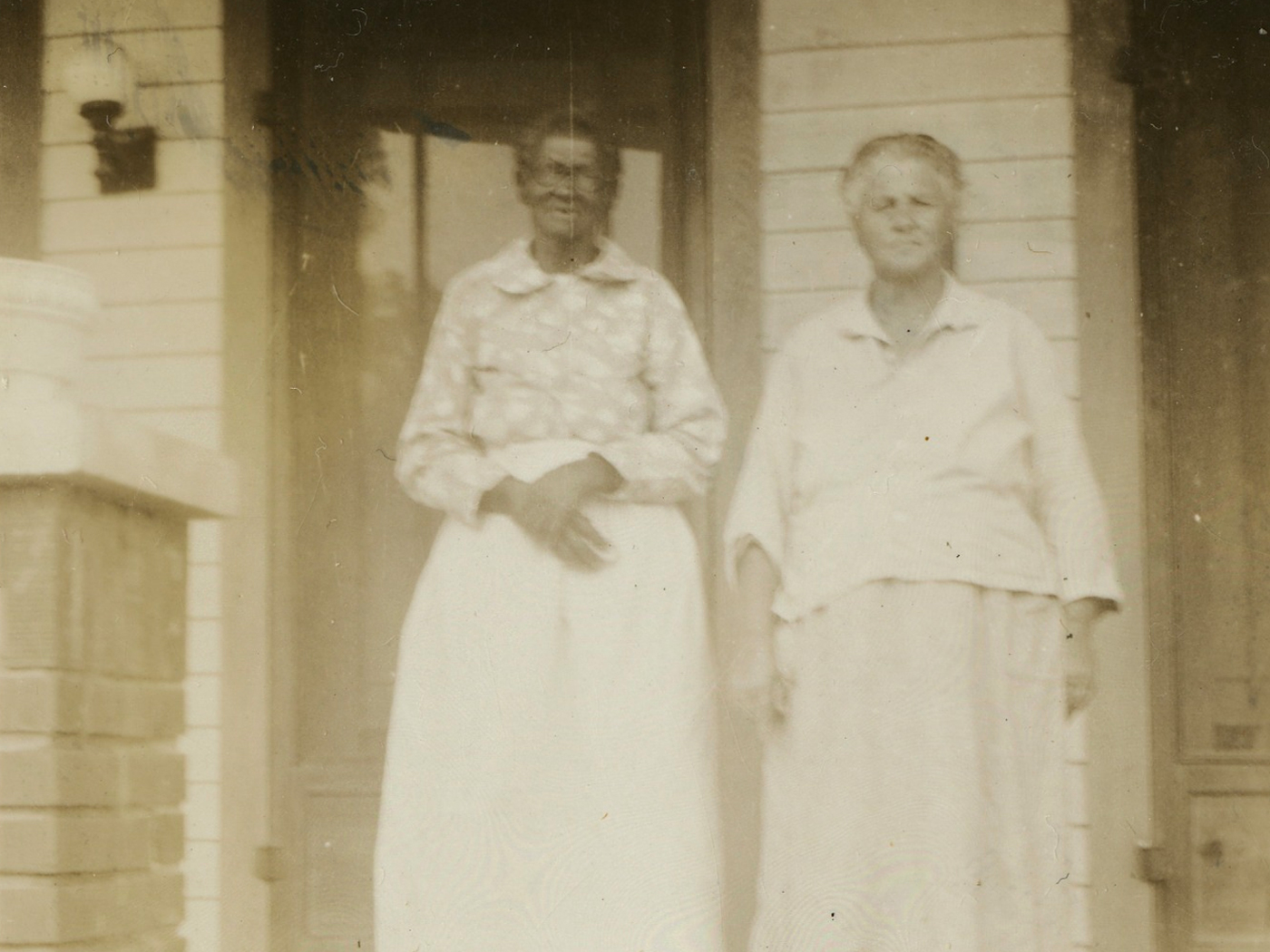How the Memory of a Song Reunited Two Women Separated by the Trans-Atlantic Slave Trade
FEBRUARY 29, 2024 7:15 A.M.
In 1990, scholars found a Sierra Leonean woman who remembered a nearly identical version of a tune passed down by a Georgia woman’s enslaved ancestors

Two unidentified Gullah Geechee women photographed by Lorenzo Dow Turner in the early 1930s Anacostia Community Museum
In 1933, the pioneering Black linguist Lorenzo Dow Turner met an elderly Gullah Geechee woman named Amelia Dawley in a remote coastal village south of Savannah, Georgia. While Turner recorded, Dawley sang a song of unknown origin, passed down through the generations by her ancestors. Dawley didn’t know the song’s meaning, but a Sierra Leonean student who heard the recording recognized its lyrics as Mende, a major language in his home country. Turner published an English translation of the song in his 1949 book, Africanisms in the Gullah Dialect.
Decades later, anthropologist Joseph Opala came across Turner’s work. He eventually decided to travel through Sierra Leone with ethnomusicologist Cynthia Schmidt and native linguist Tazieff Koroma in an attempt to trace the provenance of the mysterious lyrics. After a long, fruitless search through humid country, Schmidt ended up in the isolated village of Senehun Ngola, where she met a local woman who had preserved a shockingly similar song that traced back hundreds of years.
“[Her] grandmother had taught her the song, and she had kept it alive by changing the words for other occasions,” says Schmidt.
Located on the Windward Coast of West Africa, the region now known as Sierra Leone was a key player in the trans-Atlantic slave trade. Westerners also referred to the area as the Rice Coast; as English abolitionist Thomas Clarkson wrote in 1788, the red rice found there was “finer in flavor, of a greater substance, more wholesome and capable of preservation, than the rice of any other country.”
When slave traders arrived in Sierra Leone, they found a lush country of verdant forests, knobby mountains and waters thick with aquatic life. Cultivated rice fields and wild indigo sprawled across the landscape. Massive mangrove trees crowded the riverbanks, rendering certain villages “scarcely perceptible” and protecting their inhabitants from potential enslavers, who could pass “within a few yards of a town” and not suspect anything, wrote English physician Thomas Masterman Winterbottom in 1803.
More:
https://www.smithsonianmag.com/history/how-the-memory-of-a-song-reunited-two-women-separated-by-the-trans-atlantic-slave-trade-180983864/
Easterncedar
(2,298 posts)Thanks
cachukis
(2,244 posts)70sEraVet
(3,503 posts)The documentary is terrific. I found myself smiling and with tears. Amazing how, for these families, so much joy and love can grow from so much pain.
AwakeAtLast
(14,130 posts)Thank you so much for posting this! ![]()